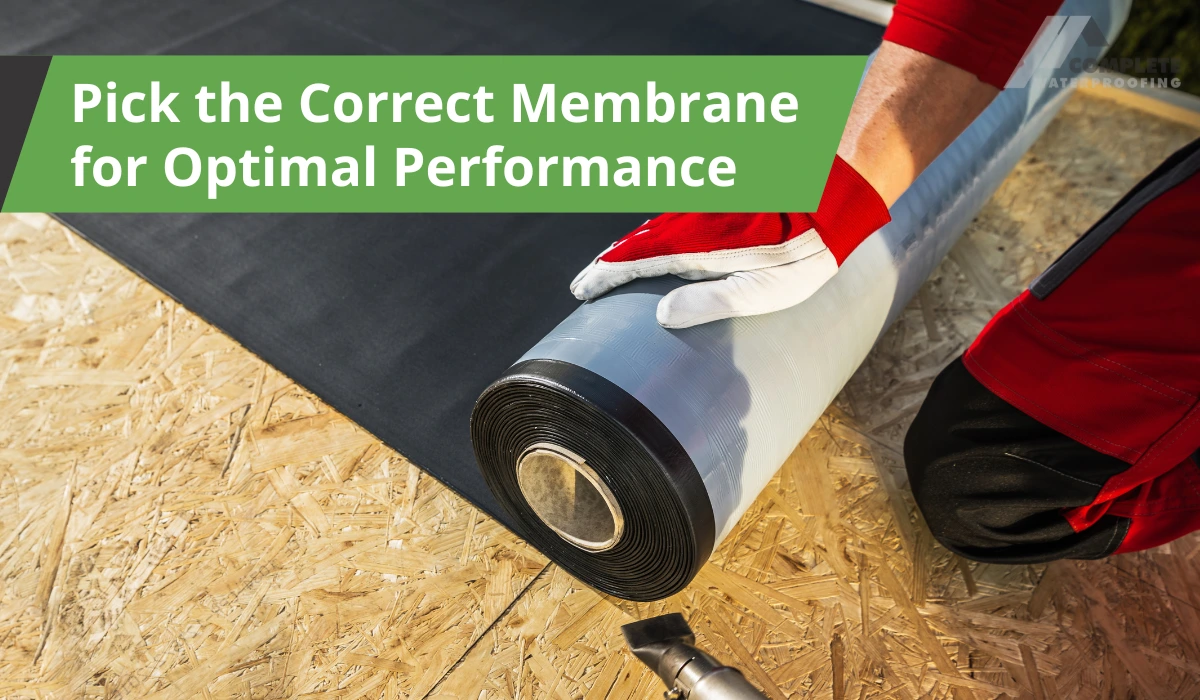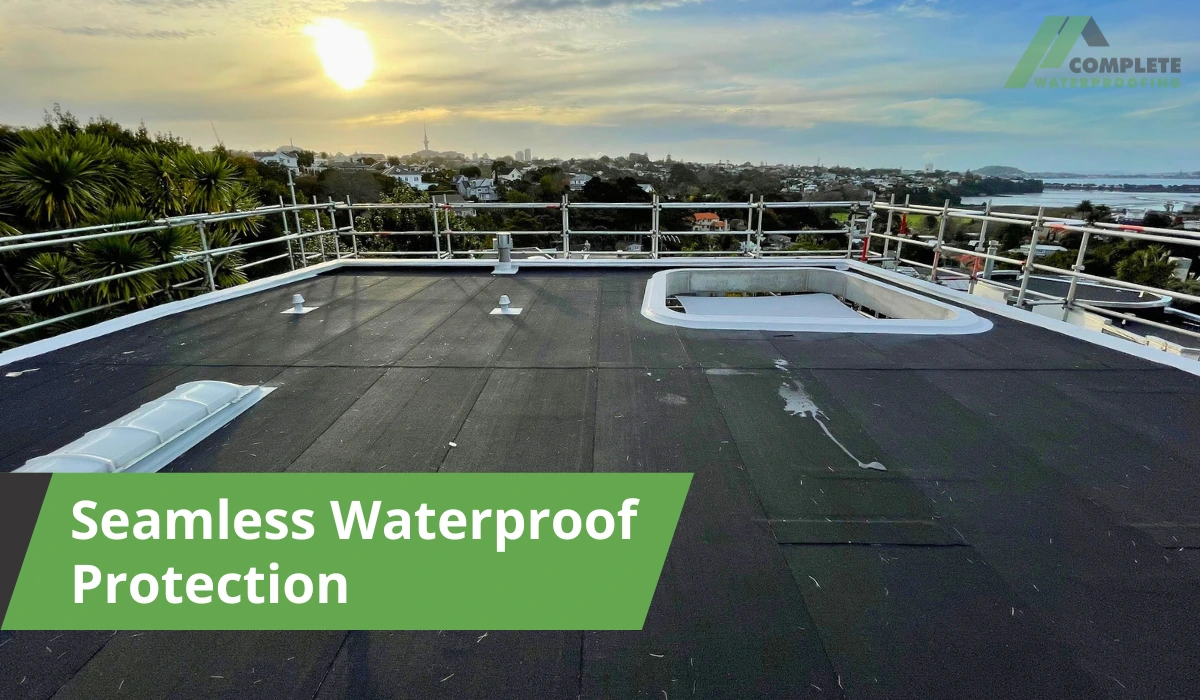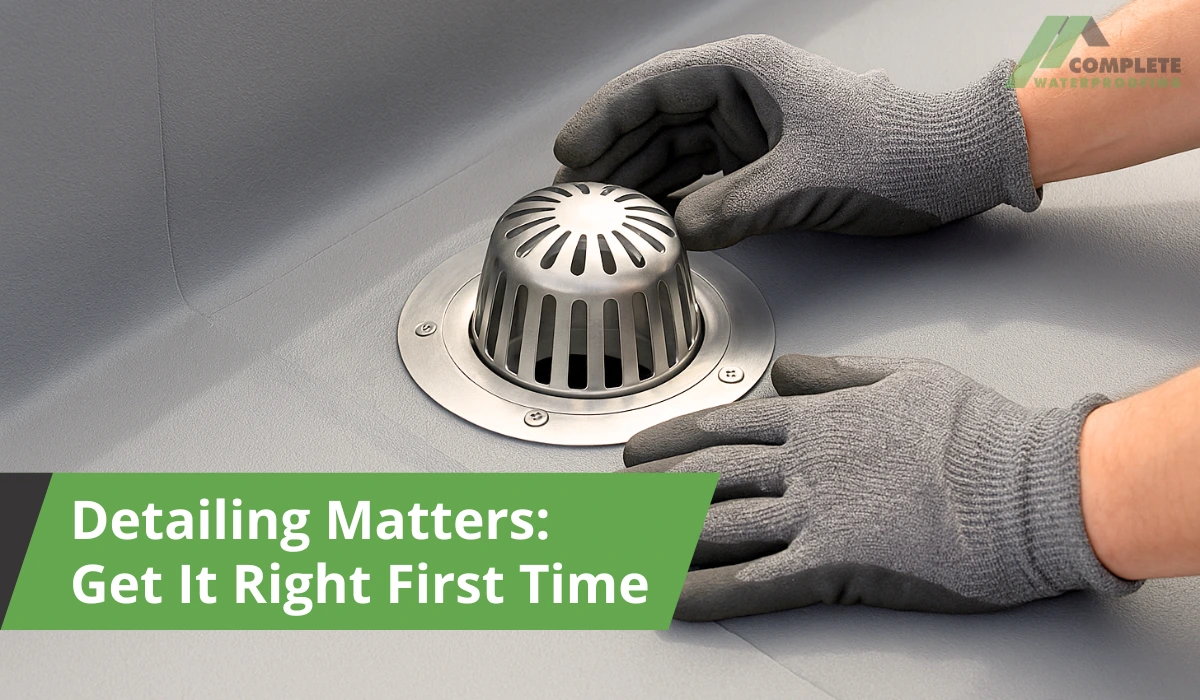Flat roofs are increasingly common in Auckland’s commercial architecture. Whether it’s a modern office complex, multi-unit development, or a council facility, flat roof systems offer clean lines and cost-effective construction. But one non-negotiable element determines their long-term success: the waterproofing system.
A membrane roof isn’t just another layer of protection. It’s a critical part of the structure that must be planned, installed, and maintained precisely. Selecting the right membrane roofing system for new commercial builds can help avoid common flat roof issues like leaks, pooling, and material breakdown. More importantly, it protects your asset from costly water damage for decades to come.
If you’re planning a new build in Auckland, here’s what you need to know before choosing your flat roof membrane—and why it pays to work with qualified waterproofing specialists from the outset.
Why Membrane Roofing Is Ideal for New Commercial Flat Roofs
Flat roofs require more than just structural engineering—they need advanced waterproofing to handle New Zealand’s unpredictable weather. Unlike pitched roofs that rely on gravity to shed water, flat roofs are more exposed to pooling, wind-driven rain, and UV damage.
Membrane roofing systems have become the go-to solution for modern flat roof designs, and with good reason:
- They offer seamless waterproofing: Installed in sheets or rolls, most membranes are heat-welded or bonded to form a single, unbroken surface that leaves no weak points.
- They’re UV and weather resistant: Designed to endure Auckland’s sun, storms, and seasonal shifts, membranes resist cracking and breakdown.
- They’re low maintenance: Membrane systems require fewer touch-ups than traditional options like bitumen or metal cladding, which can corrode or degrade over time.
Membranes are also highly adaptable. They can be installed on concrete, timber, or plywood substrates and work well for balconies, rooftop decks, and even green roofs, making them ideal for multi-purpose commercial buildings.
Choosing the Right Membrane for Your Project
The term “membrane roof” covers a range of materials, each with its own benefits and best-use cases. Choosing the right one depends on your project’s design, budget, and durability needs.
Common membrane types used in Auckland include:
- Butynol (EPDM-based): A synthetic rubber membrane widely trusted in NZ for decades. It’s durable, flexible, and ideal for residential and light commercial use.
- TPO (Thermoplastic Polyolefin): A modern, UV-resistant membrane with excellent energy efficiency. Often used in large-scale commercial and green-certified buildings.
- PVC Membranes: These provide strong chemical resistance and are suited for industrial roofs where exposure to oils or chemicals is possible.
While Butynol remains popular, newer materials like TPO and PVC are gaining traction in large commercial builds for their longer life spans and lower environmental impacts. Always consult with your waterproofing specialist to assess which system best suits your site conditions and usage demands.
Planning for Waterproofing in Commercial Builds
One of the biggest mistakes developers make is treating waterproofing as an afterthought. Waterproofing should never be a box to tick off late in the construction process—it must be integrated into early design planning.
Getting a waterproofing specialist involved early helps with:
- Design detailing: Ensuring roof slopes, drainage, upstands, and penetrations are accounted for.
- Material compatibility: Matching the membrane type to other construction materials to avoid adhesion or expansion issues.
- Trade coordination: Sequencing installation between framing, cladding, and internal fit-out teams to avoid delays or damage.
Early planning prevents cost blowouts and helps avoid the risk of having to redo sections that were improperly sealed or prepared.
Working with Waterproofing Specialists in Auckland
When it comes to commercial waterproofing, general contractors and handymen won’t cut it. Membrane roofing requires technical knowledge, precise workmanship, and full compliance with Auckland’s building standards.
Look for waterproofing specialists who can offer:
- Licensing and qualifications: Accredited installers who follow manufacturer’s specifications.
- Experience with commercial new builds: Not just patch jobs or residential work.
- Material warranties: Backed by trusted suppliers.
- Detailed project planning: Including moisture testing, substrate prep, and documented QA processes.
Complete Waterproofing, for example, focuses exclusively on membrane systems for new flat roofs, not just repairs. This dedication to quality means better long-term results and fewer problems down the line.
Avoiding Waterproofing Mistakes in New Builds
Flat roofs are unforgiving. One small oversight—like a poorly sealed join or improperly installed outlet—can compromise the entire system.
Common membrane installation mistakes include:
- Incorrect detailing around roof penetrations (vents, drains, balustrades)
- Inadequate surface preparation before membrane installation
- Use of incompatible adhesives or substrates
- Rushing installation during poor weather conditions
These errors not only reduce the roof’s lifespan but also create liability issues. For new commercial builds, mistakes like these can trigger inspection failures or delays in occupancy permits.
That’s why waterproofing should never be left to chance. A trusted specialist will handle technical details like expansion joints, flashing, and overlapping seams correctly the first time.
The Role of Climate and Building Design
Auckland’s climate is diverse—rain-heavy seasons, salty coastal winds, and strong UV rays all play a role in how well a roof performs over time.
Membrane roofs are designed to resist these environmental pressures. However, design factors like roof pitch, drainage layout, and foot traffic zones also influence performance.
Key considerations include:
- Slope direction: Flat roofs still need a minimum fall (usually 1.5°–2°) to encourage water runoff.
- Overflow design: Building codes require overflow outlets to prevent flooding during heavy rain.
- Roof access: If your flat roof will be used for services or as a deck, consider wear layers or tiles to protect the membrane underneath.
Properly designed membrane systems stand up to weather and reduce future maintenance, helping building owners keep ongoing costs predictable.
Membrane Roof Auckland: What to Know Before Starting Your Commercial Project
If you’re planning a new commercial build in Auckland, choosing the right membrane roof system from the outset is one of the most intelligent decisions you can make. It ensures watertight performance, compliance with local regulations, and a longer lifespan for your investment.
From Butynol and TPO to custom deck membranes, the best results come from partnering with a specialist who understands your build’s unique requirements. With Complete Waterproofing, you get more than installation—you get strategic planning, high-quality materials, and workmanship you can trust.
Flat roof waterproofing is not just a layer—it’s a long-term solution. Make sure it’s done right the first time.
Planning a new flat roof for a commercial site? Talk to the membrane roofing experts at Complete Waterproofing for a system designed to perform and built to last.



